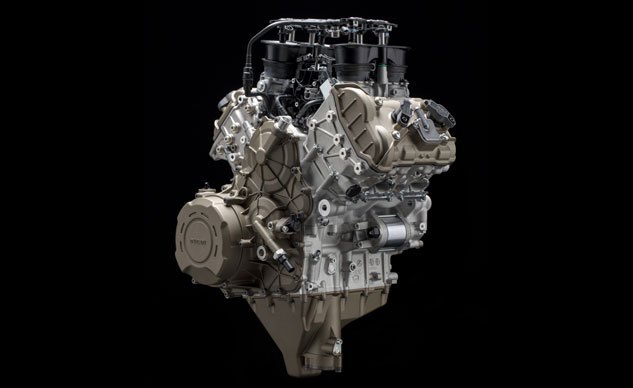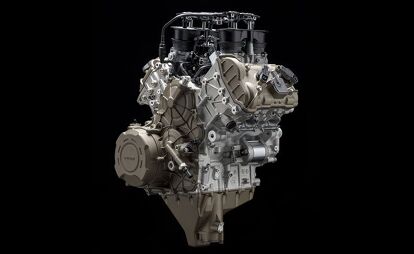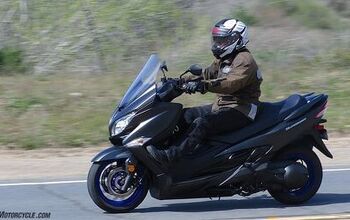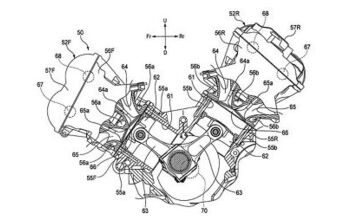Ducati Desmosedici Stradale V-4 Engine Revealed

The 1103cc "Twin Pulse" engine will power the Ducati Panigale V4
(UPDATE: Ducati has officially confirmed the new superbike will be called the Panigale V4)
Ahead of the San Marino MotoGP round at Misano World Circuit Marco Simoncelli, Ducati revealed its much-anticipated new Desmosedici Stradale V-4 engine that will power it’s next generation of superbikes. Ducati claims a maximum output of 210 hp at 13,000 rpm and 88.5 lb-ft. at 12,250 rpm.
MO Interview: Ducati CEO Claudio Domenicali on The V-4
“It’s with undiluted pride that we unveil this technological gem. It represents the start of a new chapter for our company, underlining our vitality and an unshakeable commitment to investment in new products,” says Claudio Domenicali, Ducati’s chief executive officer. “This engine also highlights the close collaboration between Ducati Corse and the factory bike development team, proving just how instrumental racing can be in developing the technology that is later applied on production bikes. In November, at EICMA, we’ll be showcasing the new Panigale V4, an all-new motorcycle powered by this extraordinary engine.”
The 1103cc (more on that later) 90° V-4 engine has a 14:1 compression ratio and at 143 pounds, weighs about 4.9 pounds more than the Superquadro V-Twin engine powering Ducati’s current bikes. The engine uses four valves per cylinder, each activated with Ducati’s signature desmodromic system. The crankshaft is counter-rotating, turning in the opposite direction from the wheels to offset gyroscopic effect of the rims while using its inherent inertia to help mitigate wheelies.
The crankpins are offset at 70° to incorporate a “twin pulse” big bang firing order, with ignition points coming at 0°, 90°, 290° and 380°. Assuming the cylinder on the front bank closest to the alternator fires first at 0°, the cylinder on the same side but on the rear bank fires next at 90°. This is followed by a slight pause before the two cylinders on the clutch side fire 90° apart. According to Ducati, this firing order offers easy-to-handle power and strong traction out of corners.
The choice of presentation venue helps highlight the engine’s connection to the V-4 powering Ducati’s Desmosedici MotoGP race bike; indeed, the Stradale shares the race engine’s dimensions and 90° V-4 configuration, including its 42° rearward rotation. According to Ducati, the engine dimensions and geometry allow for a compact powerplant, centralizing the mass and making it easier to incorporate into a motorcycle.
But the Desmosedici Stradale does differ from the MotoGP engine in one surprising way: the 81mm bore is the same as on the MotoGP bike but the 53.5mm stroke gives the Stradale engine an 1103cc displacement, making it a 103cc larger than the MotoGP engine. It also means the Desmosedici Stradale engine exceeds the current 1000cc displacement limit for four-cylinder engines in the World Superbike championship where Ducati’s next superbike is presumably intended to compete. Ducati says it will introduce a Panigale V4 R version of its new bike with a smaller displacement but higher rev limit to be homologated for competition starting in the 2019 season.
The Desmosedici Stradale uses four oval throttle bodies with variable-height intakes to optimize intake across the rev range. The intakes use a fixed horn on the throttle body and a mobile horn that moves along steel guides, modulated by an electric motor controlled by the ECU. Each throttle body has two injectors, a sub-butterfly injector for low-load use and an injector above the buttefly valve for higher engine performance needs.
Ducati redesigned the demsodromic system, reducing its overall size for smaller cylinder heads. The 16 valves are controlled by four camshafts that run on a pair of timing chains. Instead of using springs, the valves are mechanically closed, allowing for steep cam profiles and radical cam timings as the engine revs up to its 14000 rpm limit. Following a company trend in recent years, Ducati has increased the maintenance intervals, so the valves only need inspection and adjustment every 15,000 miles (general service remain at the same 7,500-mile intervals for the Superquadro engines.)
Like the MotoGP engines, the Desmosedici Stradale uses a semi-dry sump lubrication system. The circulation system uses four pumps: one delivery lobe pump and three recovery pumps. One recovery pump is dedicated to drawing oil from the head via two ducts while the other two are to ensure efficient oil recovery in all conditions, maintaining a low pressure state and reducing power loss from aerodynamic resistance from air and the splashing of oil in the connecting rod casing. The oil tank with integrated filter housing is in the magnesium sump below the crankcase. A dedicated radiator mounted below the water radiator cools the lubrication.
Attached to the engine is a six-speed transmission, ready for a quick shifter. The wet clutch is hydraulically controlled, with 11 driving plates and a progressive self-servo mechanism for a lighter clutch feel. This also reduces pressure on the clutch plates for a “slipper” action.
With the Desmosedici Stradale engine introduced, we now have to wait for Ducati to introduce its new superbike. We’ve already seen spy photos and video of the motorcycle being tested, and we now know a few more details. The engine is designed to act as a structural element of the chassis with mounting points in the upper crankcase in the front and in the rear cylinder bank head. The crankcase also has a mounting point for the swingarm and rear suspension system.
The video below gives us a taste of how the new superbike sounds while rounding a lap of Mugello. Pay close attention to the display overlaid on the bottom left corner – it may turn out to be what the instrument cluster on the Panigale V4’s presumably TFT display will look like.
We’ll have to wait until closer to EICMA in November for more information about the 2018 Ducati Panigale V4.

Dennis has been a part of the Motorcycle.com team since 2008, and through his tenure, has developed a firm grasp of industry trends, and a solid sense of what's to come. A bloodhound when it comes to tracking information on new motorcycles, if there's a new model on the horizon, you'll probably hear about it from him first.
More by Dennis Chung












































































Comments
Join the conversation
Will Ducati put that new V4 inside a new Streetfighter in the upcoming years ? (naked bike)
Has any other manufacturer used a desmodronic valve actuating system, or is it exclusive to Ducati? F1 uses pneumatic valves, but I've never heard of mechanical actuators from anyone else.